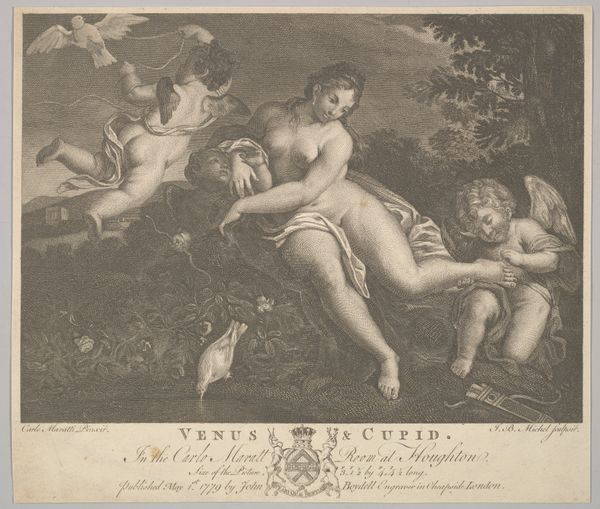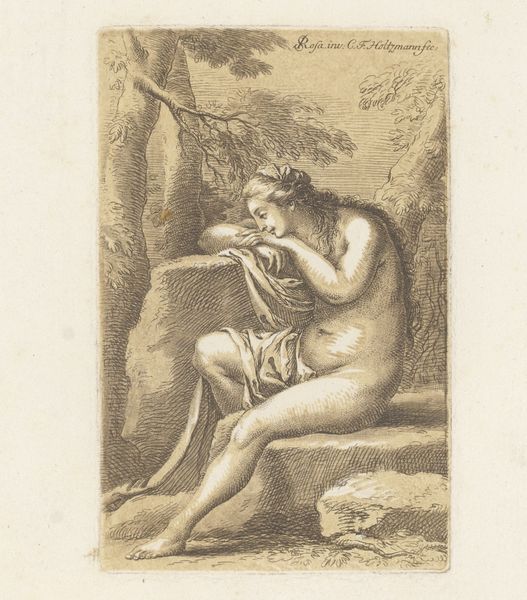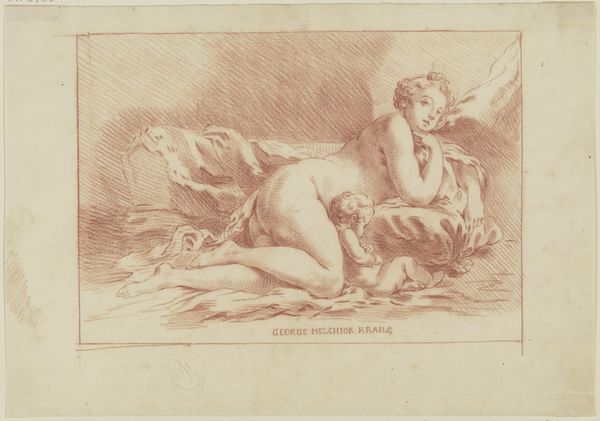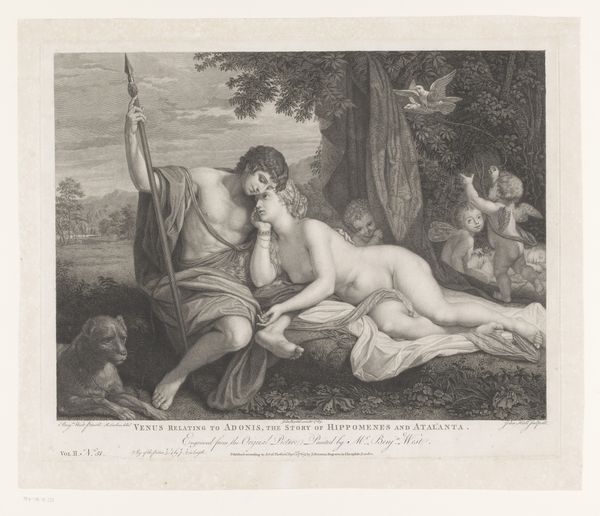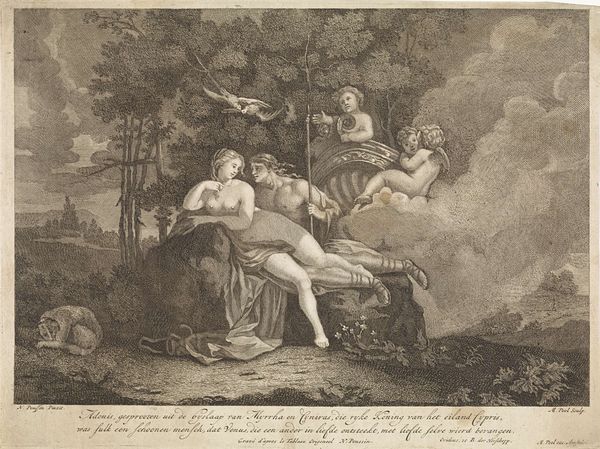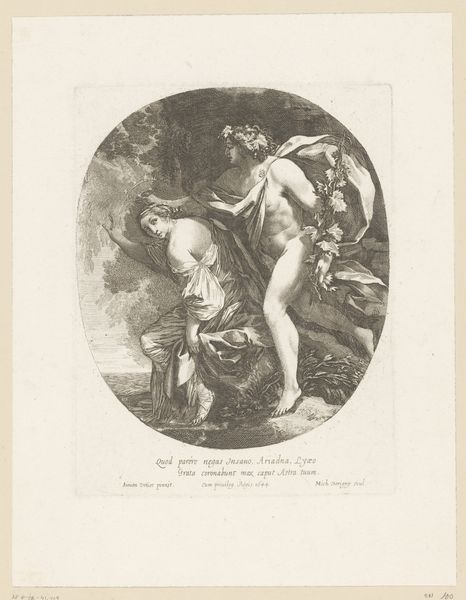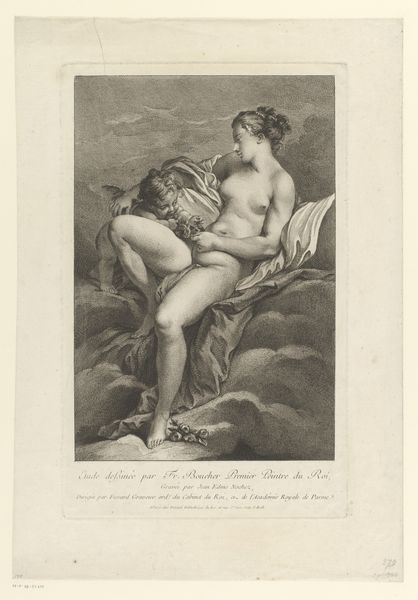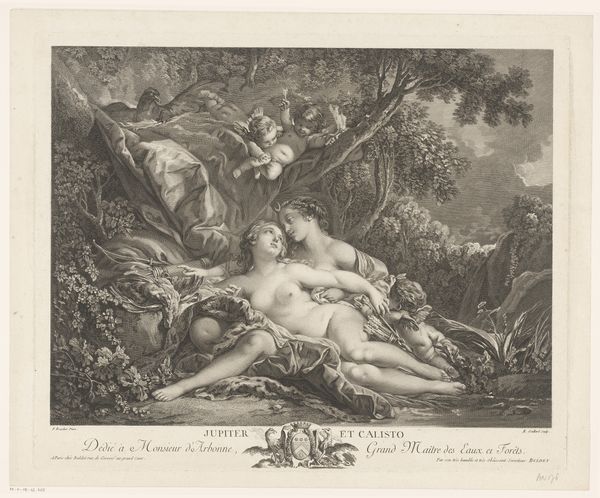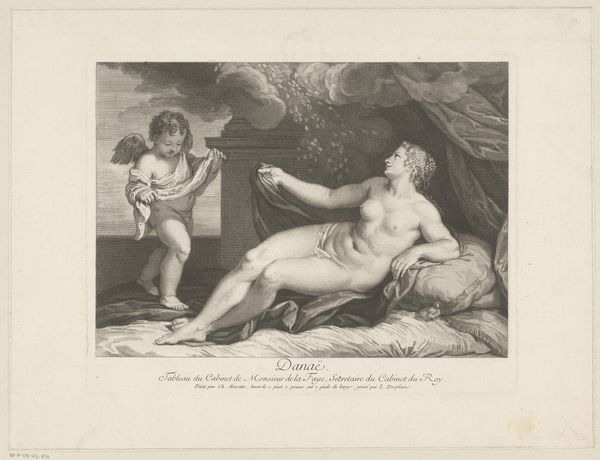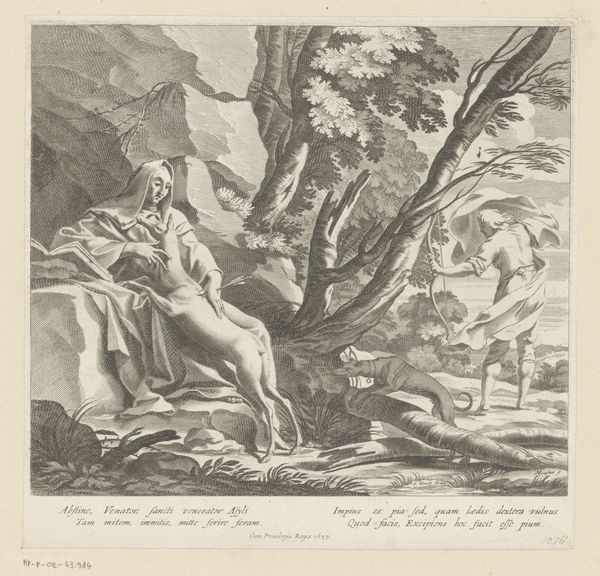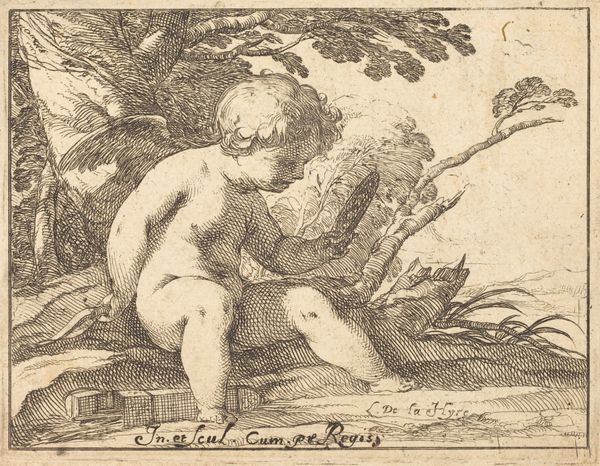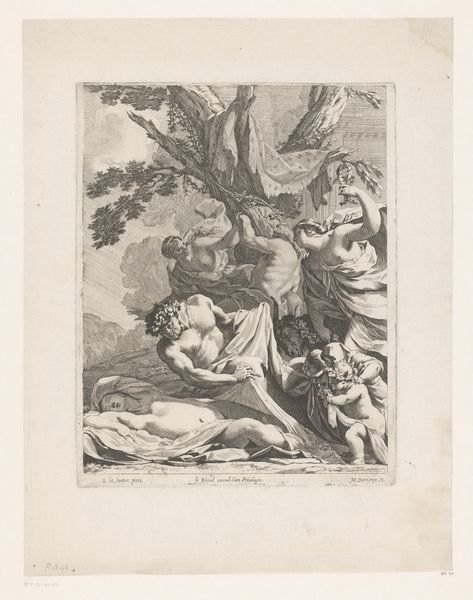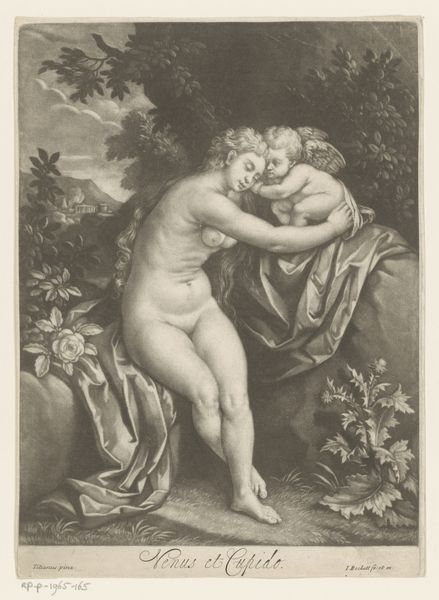
The Christ Child sleeping on a cross in a landscape, crown of thorns in the foreground, after Reni 1765 - 1780
0:00
0:00
Dimensions: Sheet (Trimmed): 8 15/16 × 8 15/16 in. (22.7 × 22.7 cm)
Copyright: Public Domain
Curator: This engraving, "The Christ Child Sleeping on a Cross in a Landscape, crown of thorns in the foreground, after Reni" dates back to 1765-1780, a product of Gaetano Gandolfi's artistry. It resides here at The Met. Editor: My immediate impression is one of serene melancholy. The juxtaposition of the sleeping child and the stark symbols of crucifixion creates a very potent emotional field. Curator: Gandolfi was, in essence, reproducing a work by Guido Reni. He acted as an engraver reproducing paintings and Gandolfi shows real technical skill here in translating the painting into a series of very economic lines that make up the engraving. One of the interesting production challenges would be the transfer of Reni’s image from the canvas to the copperplate medium that Gandolfi works upon to create this print. Editor: The crown of thorns at the foot of the cross…that's heavy stuff. Even in slumber, there's no escape from what is coming for him. That landscape, so placid, seems almost complicit in its silence. The dreamlike haze reminds us of a certain melancholy of Renaissance paintings, an understanding of tragedy, an acknowledgement of sadness, a subtle recognition of impending mortality. Curator: We need to consider printmaking's role, which made images and ideas accessible to a broad audience in this era, allowing wider distribution for devotion but also affecting workshops, as we see collaboration between painters like Reni and printmakers like Gandolfi shaping artistic production and networks. The Baroque’s high drama met efficient image production, feeding the devotional needs and taste for art reproductions during that time. Editor: And how different this is to what you describe. Consider how that innocent nakedness transforms under this symbolic weight. The open-shuttered eyes closed. This work captures innocence yoked to destiny, love paired to sacrifice, foreshadowing imminent loss; I find it quietly overwhelming. Curator: It really gets to something central in terms of the accessibility afforded by printed material and labor of love and work for all concerned during this period. Editor: Indeed, something enduringly poignant. Thank you.
Comments
No comments
Be the first to comment and join the conversation on the ultimate creative platform.

